
Produced by Shimadzu
Nexera is a new ultrahigh-pressure LC (UHPLC) system combining excellent hardware performance and analytical intelligence. Analytical intelligence (AI) is a new concept for analytical instrumentation, which Shimadzu defines as a system that can monitor and diagnose itself, handle any issues during data acquisition without user input, and behave as if it were operated by an expert. AI features within the Nexera system include: automated system start-up with FlowPilot functions to protect the column; a unique device and mobile or computer application to minimize the risk of mobile phase shortage (known to lead to system failure and column damage); detection of solvent flow anomalies by the system followed by automatic correction to enable stable data acquisition; and unique post-run processing technology, offering accurate peak integration and the determination of overlapping peaks.
Potential impact
Automated data acquisition from thousands of samples through high-speed UHPLC sampling and a high-capacity plate changer dramatically improves operating efficiency. However, overall analytical efficiency depends not only on hardware and software, but is also affected by the skill and experience of the user. And, while efficient training is a time-consuming process, the number of experts available in the analytical workplace is dwindling. AI functionality can help improve data reliability regardless of the analysts’ skill and experience. It supports the acquisition of high-quality, reproducible data for both routine and demanding applications by foreseeing and correcting common issues.
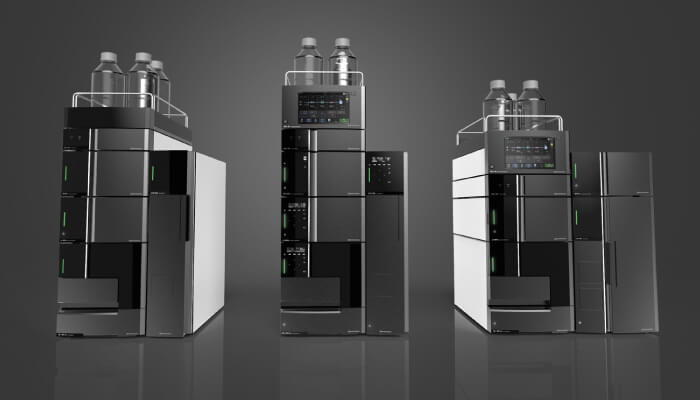
Produced by 908 Devices Inc.
The Rebel is a first-of-its-kind, integrated analyzer for fresh and spent media analysis. The instrument aims to simplify media analysis, and its compact, self-contained footprint fits alongside bioreactors in process development and cell culture labs. Samples can be run at-line in less than 7 minutes, eliminating the core lab wait time, and calibration and data analysis are completed automatically for a panel of more than 30 analytes (including critical amino acids, biogenic amines, water-soluble vitamins and dipeptides). Built for GMP environments, Rebel integrates reporting, automated performance qualification and 21 CFR Part 11 compliant software. By accelerating process development cycles and maximizing bioreactor utilization, Rebel will enhance research across biopharma.
Potential impact
Media composition is critical for maximizing cell line productivity and biotherapeutic quality; thus, optimization of media represents a coordinated effort between numerous teams. Due to limited access to analytics among cell culture scientists, media preparation teams and bioengineers, third-party labs are usually involved in the analysis of amino acids, dipeptides and vitamins, but results from these sites may take several days to return. The Rebel operates at-line alongside bioreactors to eliminate this delay. What’s more, the instrument does not require special sample preparation beyond filtering and dilution, and uses minimal sample volumes, which facilitates rapid analysis earlier in process development.
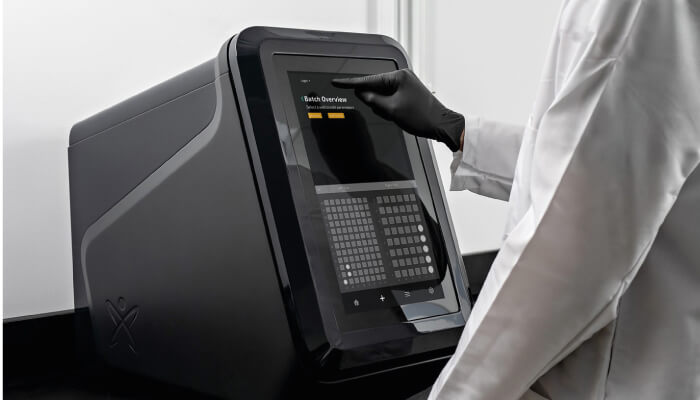
Produced by Tosoh Bioscience
The LenS3 utilizes Rayleigh light scattering to obtain the molecular weight and size of macromolecules in solution. How does it differ from current multi-angle light scattering (MALS) detectors? A novel optical design that allows for light scattering measurements at angles as extreme as 10, 90 and 170 degrees. How? By “dumping” the incident beam and minimizing the “stray light” effect. The detector makes use of an optical “flow path” of largely non-refractive bio-inert PEEK, which splits the sample into two streams, elongating the flow path, maximizing the interaction of the incident beam with molecules of interest and significantly increasing light scattering intensity. The MALS detector can measure the angular dissymmetry of scattered light for molecules as small as 2 nm in size – well below current detection limits.
Potential impact
MALS is routinely used in conjunction with HPLC-size exclusion chromatography to identify and quantify levels of aggregation in monoclonal antibodies and other therapeutic proteins and peptides. LenSTM3 can reproducibly detect and quantify levels of aggregation at much lower levels of sample loading, allowing scientists to extend the level of species detection and leading to more informative analyses using less sample. Plus, by extending the size detection limit down to below 2 nm, scientists can reliably use the radius of gyration to better understand the conformation of macromolecules in solution. Polymer scientists can use LenS3 to characterize chain branching and obtain data across the entire distribution of molecular weight, and the combination of gyration radius with hydration radius can provide shape factors of proteins and antibodies.
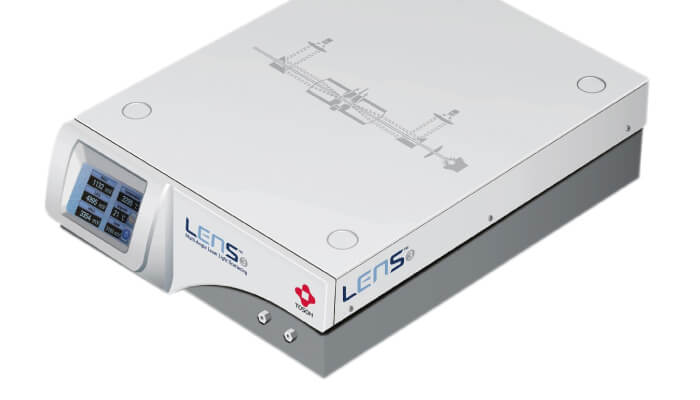
Produced by SCIEX
The TripleTOF 6600+ LC-MS/MS System incorporates low-flow source technology to deliver accessible, sensitive and precise quantification at ultra-fast scanning speeds of up to 100 Hz MS/MS across a broad dynamic range. The instrument utilizes Scanning SWATH Acquisition to make four-dimensional records of all detectable analytes, and is equipped with an OptiFlow Turbo V Source – a single source for all micro- and nano-flow applications. The high-resolution data can be shared through integration into the SCIEX Cloud, supporting meta-analyses, omics and big data applications. Markus Ralser (Senior Group Leader, The Francis Crick Institute, London and Director of Biochemistry, The Charité, Berlin) says, “The TripleTOF 6600+ System with Scanning SWATH retains the sensitivity and data quality we have come to expect but adds the fast scanning capability that is critical for the next generation of proteomic applications that we have increasingly become dependent on.”
Potential impact
To make the most of limited samples with many trace analytes, scientists are turning to highly selective and sensitive micro- and nano-flow LC-MS/MS. Small injection volumes mean greener and cheaper analyses, while scanning SWATH acquires vast, precise and correlated datasets, empowering researchers and facilitating data-driven decisions. Data-sharing in a cloud-based environment maximizes the utility of this richly defined data, enabling powerful meta-analyses that extract and translate findings into meaningful macro-level conclusions.
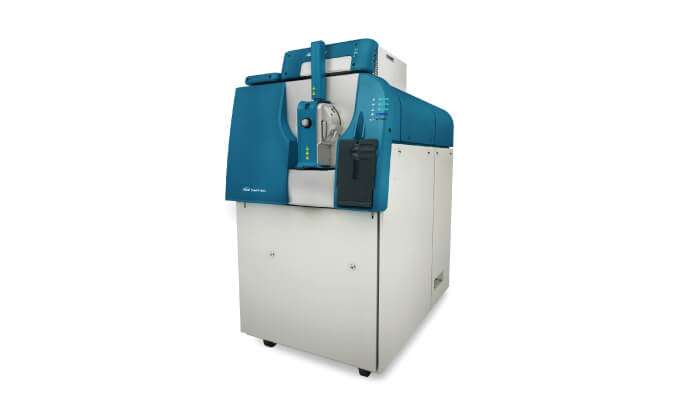
Judge’s verdict
“Tiny amounts suffice to collect the highest quality spectra–no longer will we need to be nervous about whether the tiny volume of sample collected is enough for doing all the MS experiments required, or whether the sample will be gone before all data are collected.”
Produced by PEAK Scientific
Peak Scientific’s Precision Hydrogen SL line provides an efficient hydrogen gas solution for GC flame detectors at a purity of 99.9995 percent. The smallest laboratory-grade hydrogen generator in its class, Precision Hydrogen SL produces hydrogen at the push of a button whilst taking up minimal bench space. Available in both 100 cc and 200 cc, Precision Hydrogen SL is simple to use and easy to maintain, requiring only the simple replacement of a sealed-capsule desiccant system and de-ionizer cartridge, both of which can be changed in one minute by the user. Featuring advanced fail-safe technology with minimal gas storage, SL provides laboratories with a safer alternative for supplying hydrogen gas to GC detector flames.”
Potential impact
Precision Hydrogen SL is less than 20 percent the size of its predecessor, eliminating the need for additional space preparations in and around the lab. Extremely compact in design, Precision SL reduces footprint requirements to the bare minimum while improving safety by removing the dangers of manhandling heavy pressurized gas containers – very little hydrogen gas is stored. The automatic failsafe technology also shuts down the generator in the unlikely event of leak detection. Delivering reliability in its simplicity, Precision Hydrogen SL comes with only one button for startup and shutdown, and the user-friendly maintenance is just as simple – no engineer is required on-site, minimizing instrument downtime. Eliminating repeated deliveries means that labs can have gas available 24/7 – and reduce their carbon footprint.
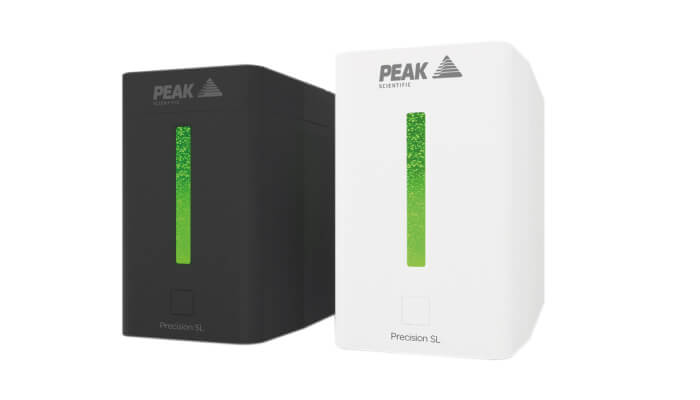
Produced by Tasso
The Tasso OnDemand platform consists of five components: (1) a kit containing a novel and painless, blood collection device that patients use to collect blood samples; (2) patient-facing prompts to ensure adherence to blood sampling protocols and collection of additional contextual data points; (3) logistics management tools for the distribution and receipt of kits; (4) a certified laboratory partner to handle sample analysis; and (5) a secure data access protocol to deliver results to the necessary parties. Tasso OnDemand is currently used for remote pharmacokinetic and therapeutic drug monitoring applications, and has now started expanding to include additional test panels.
Potential impact
Tasso OnDemand enables comprehensive at-home care by adding blood tests to the virtual care experience. This means that a typical clinic visit can now be completed at home, expanding the amount of data that can be collected to support care delivery and analytics. Patients appreciate increased convenience, clinicians value more insight, and scientists benefit from faster discovery. Of course, high-quality data relies on high-quality samples; the OnDemand product is an enabling technology that will enhance clinical trials and general healthcare monitoring, while also translating findings into meaningful macro-level conclusions.

Judge’s verdict
“The collection of a blood sample will no longer require a trip to see a healthcare professional. The patient is in full control, moving part of the laboratory analysis to the confident and secure home environment.”
Produced by Agilent Technologies
The InfinityLab LC/MSD iQ is designed to support chemists and chromatographers seeking improved clarity in their LC results. Agilent’s OpenLab CDS Software provides an efficient and reliable method for data collection, analysis, and reporting, developed with a focus on ease of use and data integrity. MS data acquisition is simplified by features such as the “Auto Acquire” mode, which makes method setup as intuitive as that of LC – no need to understand the underlying physics. A touchscreen-enabled interface and pre-configured analyses further streamline sample submission for open access labs, minimizing the associated training requirement when coupled with the MassHunter WalkUp Software. The InfinityLab LC/MSD iQ also resides beneath the Agilent’s InfinityLab HPLC stack, saving valuable lab space.
Potential impact
The instrument is aimed at labs performing small molecule analysis in pharmaceutical research (from development to quality control), as well as food and materials labs that use MS data for data-driven decisions. The instrument has a range of features to reduce downtime and improve productivity, including intelligent instrument tracking to ensure robust and reliable operation, and embedded sensors that quickly assess system configuration. Lab managers can plan routine maintenance in line with their lab’s schedule to maximize effeiciency.
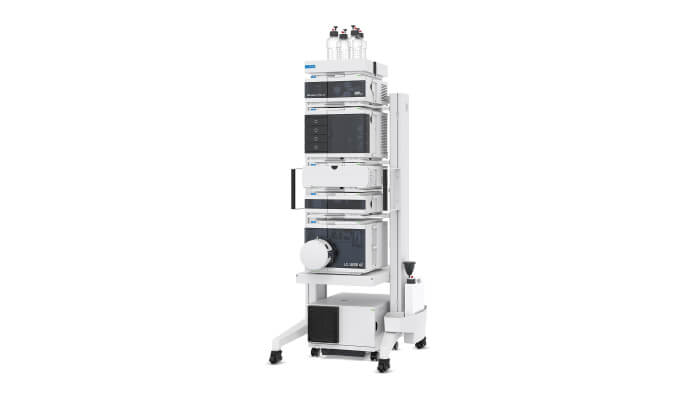
Produced by Idaho National Laboratory
First responders, radiation detection specialists, and nuclear operators need simple, rapid, and reliable field equipment to detect radionuclide contamination, but handheld detectors are inadequate for detecting alpha-emitting actinide species like uranium and plutonium. This newly developed, selective colorimetric technology can be used by response personnel to characterize actinides during field contamination events and everyday maintenance testing at nuclear facilities. CoDeAc technology presents a visual color change for uranium at ppm and ppb levels using a smear and solution system; this novel system will allow first responders to assess the magnitude, dimension and severity of radiological events on-site, thus helping on-scene coordinators to make decisions quickly. All in all, CoDeAc provides a practical alternative to collecting thousands of forensic grab samples that then require off-site laboratory analysis.
Potential impact
We must prepare for major nuclear incidents, regardless of their source (from reactor accidents to improvised device detonation). The colorimetric approach for actinide detection presented here allows for substantial time- and cost-savings over current methods, is easily and simply deployed in the field, and has no known industrial equivalent. The impressive detection levels of the CoDeAc detection method can be used for both maintenance checks and potential spills, meaning hazards can be identified early, protecting the public from future events.
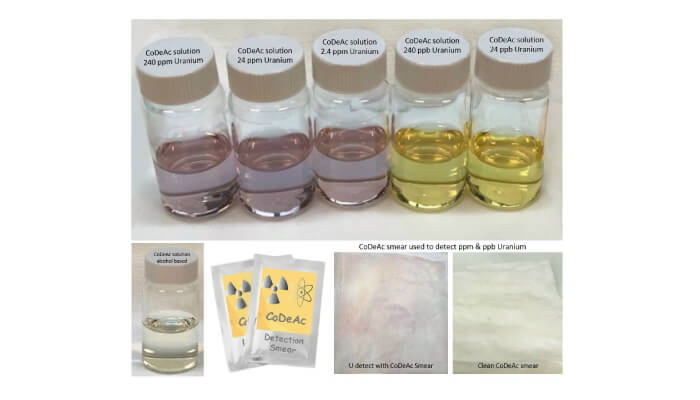
Produced by Syft Technologies and GERSTEL GmbH&Co.KG
The release of the TD-SIFT-MS marks the second automated SIFT-MS solution commercialized in recent years. The result of a collaborative effort between Syft Technologies and GERSTEL, TD-SIFT-MS speeds up sample throughput for TD tubes. The speed and selectivity of SIFT-MS is the result of multiple, rapidly switchable reagent ions, while the soft chemical ionization ensures sensitivity and precision. Coupling SIFT-MS with GERSTEL automation has allowed improvements in repeatability and sample throughput, combined with GERSTEL’s Maestro software. In addition to controlling injection into the SIFT MS instrument, the Maestro software’s PrepAhead function allows for optimal sample scheduling, as well as temperature ramping and cooling steps, allowing throughput of up to 20 samples per hour.
Potential impact
The combination of high-performance TD and real-time SIFT-MS allows for simultaneous desorption and analysis, meaning more information can be extracted from temperature-resolved concentration profiles. This is particularly advantageous for studies of off-gassing because it allows for rapid, direct emission analysis during thermal extraction. In addition to enabling faster analysis of TD tubes, the high sensitivity of SIFT-MS enables shorter tube loading times; SIFT-MS also allows for simple analysis of chromatographically challenging compounds, such as aldehydes, as well as quantification of diverse compounds in one analysis. In short, the combination of TD and SIFT-MS saves time and has potential applications in studies of the environment, air quality, automobiles, breath, and material emissions.
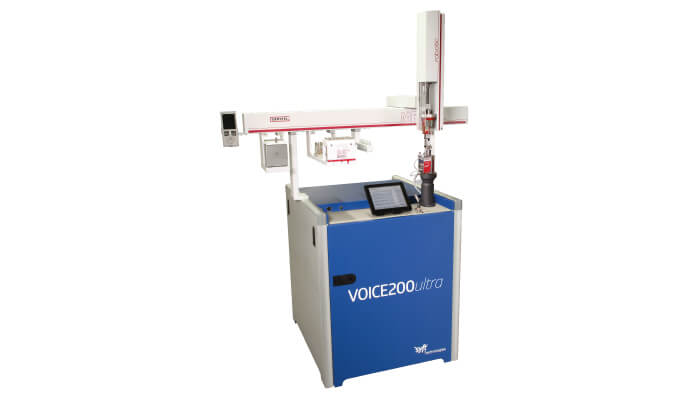
Produced by Thermo Fisher Scientific
The Thermo Scientific Orbitrap Exploris 480 mass spectrometer offers a compact, benchtop solution for advanced protein analysis, quantitative proteomics and small-molecule applications. The system addresses the need to support large-scale translational studies, delivering high-throughput protein identification and quantitation, and structural characterization of biotherapeutics and translational biomarkers. The use of intelligent data acquisition methods is designed to allow even inexperienced analysts to gain confident insights into compounds across a mass range of 40-6000 m/z. With a smaller footprint than previous generations, the new system takes up less laboratory space while maintaining high resolution, mass accuracy, and spectral quality. The company claim that combination with the Thermo Scientific FAIMS Pro Interface can increase the proteome coverage by a further 20 percent.
Potential impact
Scientists are using the instrument to rapidly assess the quality and safety of future therapeutic approaches, identify novel biomarkers, and further our understanding of the proteome. The need for flexible analytical instruments usable by analysts regardless of their experience will only grow as the analysis of protein-based therapeutics and discovery and validation of novel biomarkers become increasingly routine. This instrument helps biopharmaceutical scientists identify structural characteristics to determine whether a batch meets quality standards, while also supporting translational scientists to explore samples and target specific analytes when needed.
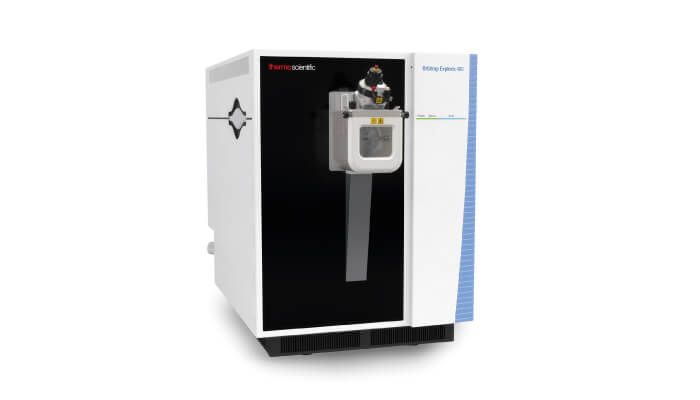
Produced by WITec GmbH
ParticleScout is an advanced particle analysis tool for the WITec alpha300 confocal Raman microscope series that finds, classifies and identifies microparticles over even large sample areas. Measurements guided by automated routines proceed from sample overview to targeted investigations into physical properties and the chemical characterization of individual particles. ParticleScout capitalizes on the inherent advantages of Raman imaging to conduct fast, label-free and non-destructive chemical characterization. Focus stacking keeps differently sized particles in focus and the system has full integration with the TrueMatch Raman database management software.
Potential impact
Microplastics have permeated the environment and made headlines around the world, with some going as far as to describe the residual presence of microplastics in sediments as evidence of the “Anthropocene” epoch – the age in which human activity is the primary driver of environmental change. For the results of investigations of microplastic pollution to be regarded as conclusive, the particles must be detected, identified and quantified with great precision. What’s more, for investigations to be comprehensive and have real-world significance, samples must also be measured in a practical amount of time; advanced optical and algorithmic techniques are necessary to expedite this process. ParticleScout fulfills the speed and precision requirements of these studies in a userfriendly format.
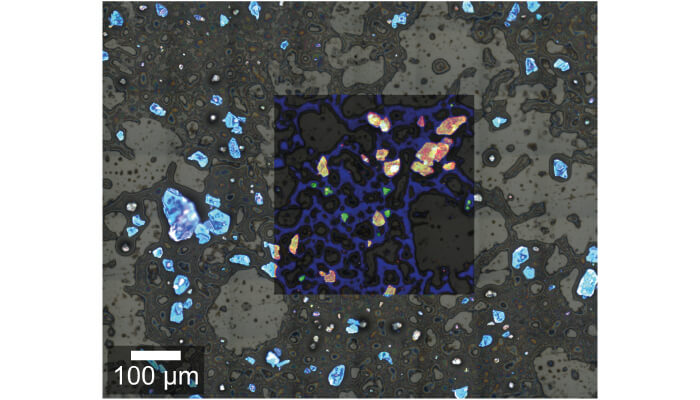
Produced by Scripps Research
METLIN reached the milestone of 500,000 standards of tandem MS data in August 2019. The new downloadable version – METLIN Local – contains experimental data for each molecular standard in both positive and negative ionization modes generated at four different collision energies. Originally designed to facilitate the field of metabolomics, METLIN Local has now expanded into the broader field of small molecule chemical analysis, including organic chemistry, pharmaceuticals, toxicology, exposure research, and drugs of abuse.
Potential impact
METLIN Local will have far-reaching implications, firstly by increasing the ease and reliability of molecular identification exercises, but also by providing researchers with countless further opportunities to exploit the data. The dataset is 30 times larger than alternative standards databases and is a refined resource that has been widely used for over a decade. Beyond METLIN Local’s obvious benefits for metabolite and chemical entity identification, it is also valuable for unknown identification through the implementation of Scripps Research original similarity searching technology.
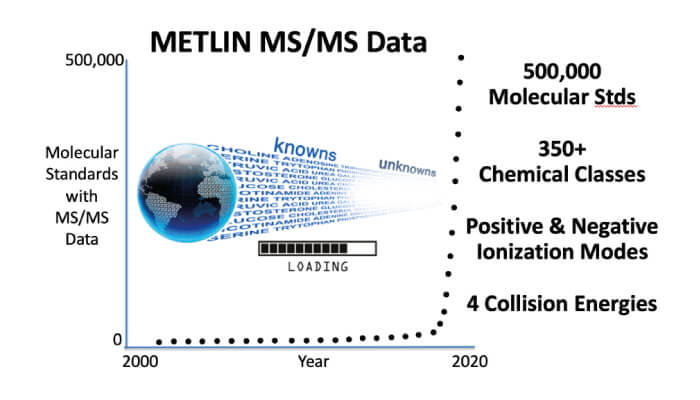
Judge’s verdict
“Modern LC-MS analyses allow us to obtain spectral information on hundreds of compounds in under an hour – this database is a great step forward in simplifying the painstaking identification process that follows.”
Produced by Thermo Fisher Scientific
The Thermo Scientific VeriSpray PaperSpray ion source is a high-throughput direct sampling system that provides an alternative to complex chromatographic separation steps for numerous MS-based applications. Compatible with the latest generation of Thermo Scientific mass spectrometers, it simplifies sample preparation and enables faster results with reduced cost per test. With a disposable interface, the ion source eliminates complicated off-line sample preparation and chromatographic separation. Plus, unprocessed samples can be analyzed in a single step, with results in under two minutes. The system provides a complete sampling solution with an easy-to-operate interface designed to be accessible for all analysts, and the VeriPray PaperSpray ion source reduces solvent consumption and disposal, which should eliminate LC and GC maintenance costs and derivatization steps.
Potential impact
Life science labs using MS for routine applications, including drug analyte testing and drugs of abuse analysis, face a series of challenges that can cause backlogs of time-critical samples, such as reduced availability of skilled personnel, rising costs per test, and issues with instrument maintenance and downtime, resulting in significant pressure to increase throughput while reducing costs. The Thermo Scientific VeriSpray PaperSpray ion source replaces complex sample preparation and chromatographic separation steps with a simple sample blot on a single-use paper cartridge. The direct sampling strategy allows researchers to overcome the limitations associated with routine LC- and GC-MS-based strategies across applications, delivering results in under two minutes and improving productivity.
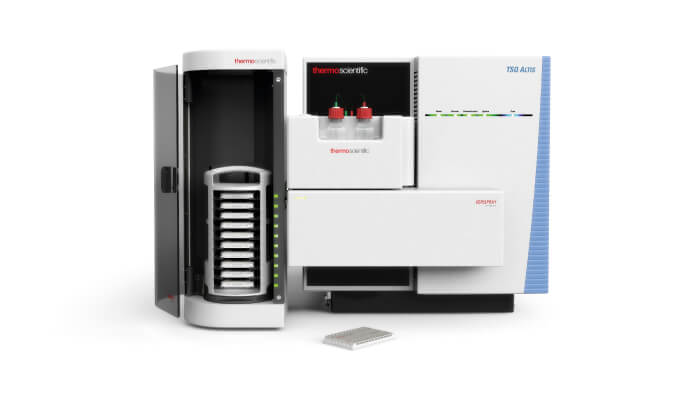
Produced by Waters
The SELECT SERIES Cyclic™ IMS integrates novel cIM technology into a next-generation time-of-flight mass spectrometer. The cIM region consists of a 98 cm path length, closed-loop traveling wave (TW)-enabled IM separator positioned orthogonally to the main ion optical axis; a key part of this geometry and its flexibility is the interface between the ion optical axis and the cIM, where a planar array of electrodes provides control over the TW direction and subsequent ion motion. On the other side of the array, ions are injected, ejected, stored and activated by ion guides, allowing ion mobility selection in a commercial instrument for the first time. The instrument also includes new ion optics, including the time-of flight geometry, which provides MS resolution up to 100,000 m/z, a new detector and instrument control software.
Potential impact
The innovative cyclic device provides selectable, high-resolution ion mobility separations and provides experimental flexibility to IMSn experiments, alongside improved resolution – a key asset for assessing small molecules like oxidized lipids and oligosaccharides. Scientists are applying the technology to investigate unfolding curves for native proteins, isomeric compounds in petroleomics, and isobaric compounds in complex biological matrices – topics on which peer-reviewed publications making use of the device are already published.
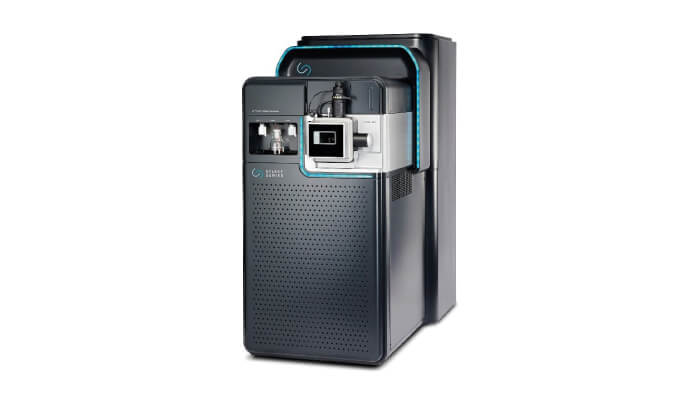
Produced by Activated Research
The Solvere is an LC detector that produces a linear response to non-volatile organic compounds using FID and a novel separation-reaction method. The key innovation driving these capabilities is the use of a catalytic reactor to transform organic molecules and remove solvent from LC effluent streams, allowing improved linear range and high sensitivity to the universal detection of non-volatile carbon organics.
Potential impact
In the pharmaceutical industry, the Solvere has the potential to accelerate drug development processes while simultaneously supporting the production of cleaner and more advanced pharmaceuticals. Elsewhere (for example, in the research of fuel, renewables, food, and flavor), the Solvere will enable research endeavors across industry and academia alike. Activated Research hopes that minimizing the need for calibration will facilitate research that was previously considered prohibitively expensive or practically impossible, with lasting impacts for the global scientific community, and for society as a whole. A current HPLC user in the drug discovery market said: “Activated Research’s technology would be completely disruptive; it would change the paradigm of how pharmaceutical analysis is performed.”
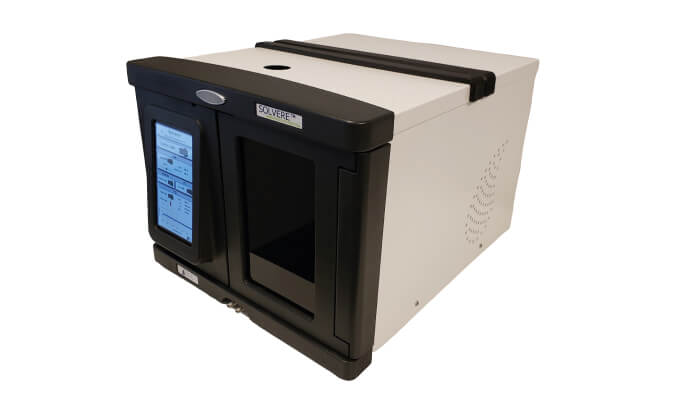
Judge's verdict
"Quantification of HPLC peaks of unknowns or of compounds for which no standards were available has resulted in numerous errors. Now every compound can be quantified, taking away subjective assumptions and large errors."




